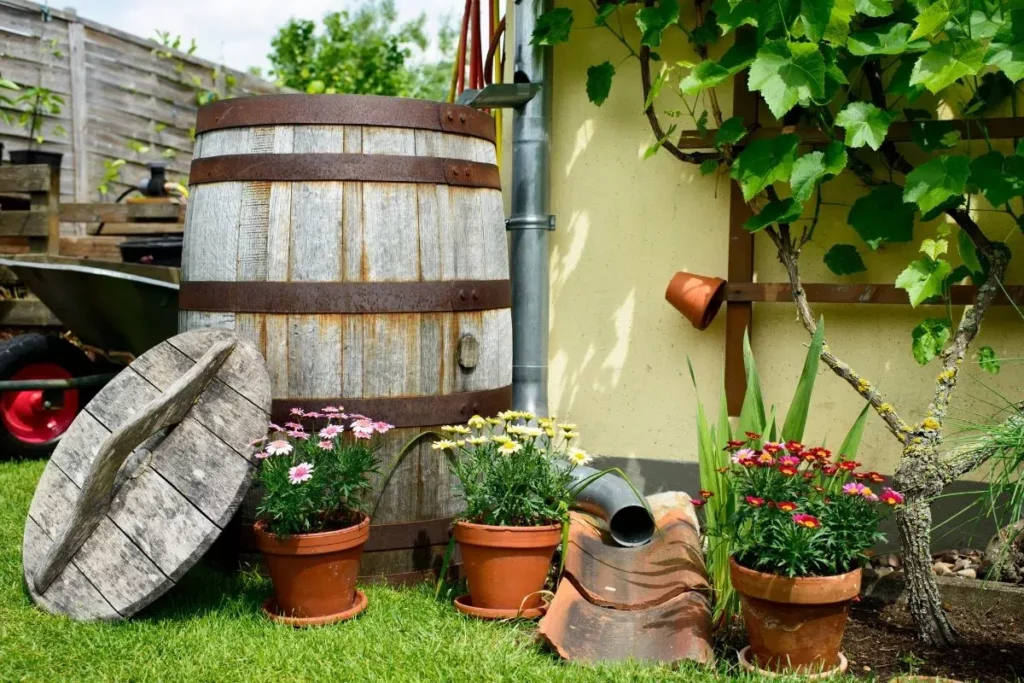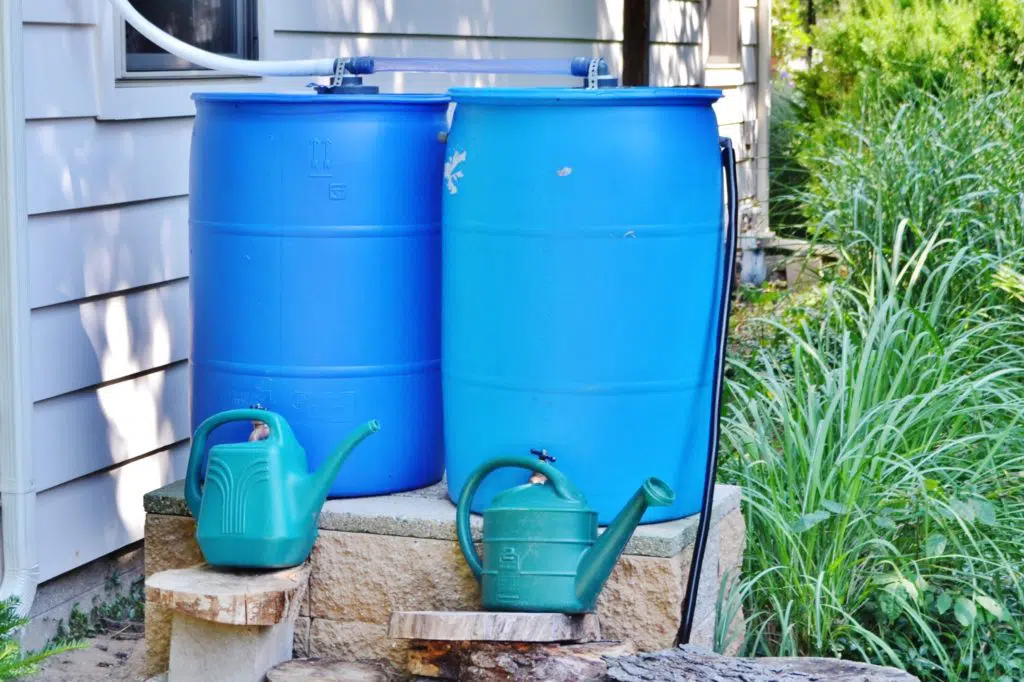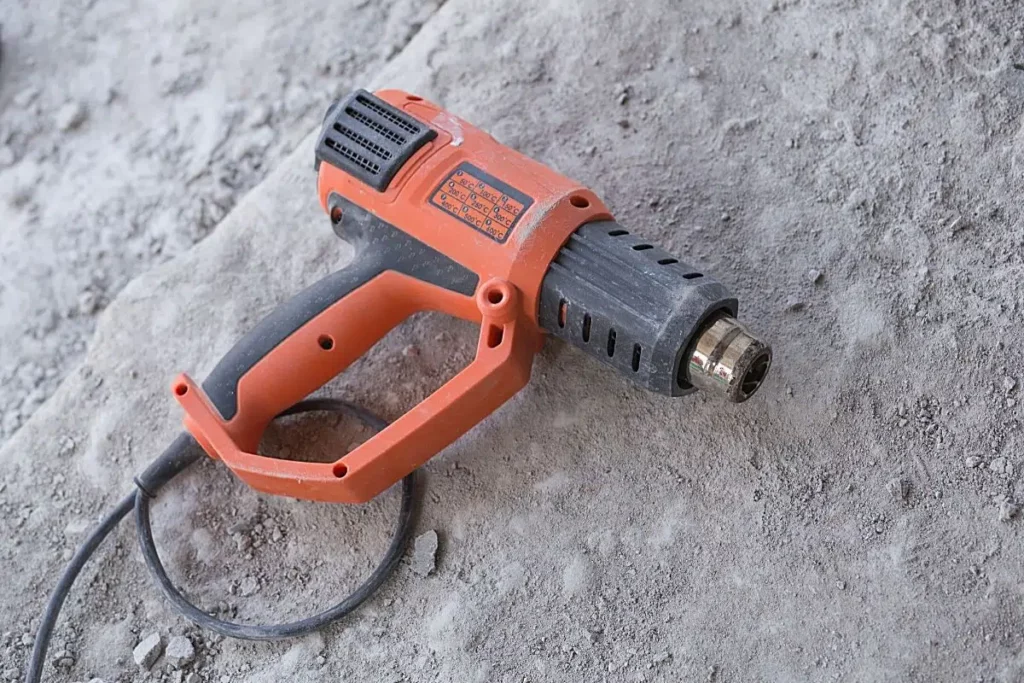A rain barrel is subject to enormous stresses due to wind and weather, UV radiation and not least the water itself. But not all damage leads to unusability. Small cracks in rain barrels in particular can be easily repaired.
Contents
- 1 Material and procedure
- 2 Metal rain barrel
- 3 Soldering
- 4 Wooden barrels
- 5 Plastic barrels
- 6 Bonding
- 7 Weld
- 8 Frequently asked questions
- 9 What do I do with plastics other than PE?
- 10 Why does my metal rain barrel keep cracking?
- 11 Can I also seal my wooden barrel with wool?
- 12 Why do I have to clean the repair area beforehand?
- 13 Author
Material and procedure
Of course, there is the image of a typical rain barrel that most people see in their mind’s eye. In reality, however, it looks somewhat different. In fact, there are countless different designs, as well as various “misappropriated” objects, which have to serve for the storage of rainwater for garden irrigation. Particularly common are a few materials:
- Plastic (mainly polyethylene PE)
- Rarer: glass fiber reinforced plastic
- Metal (aluminum or sheet iron)
- Wood
Depending on the material found, the procedure you can use to patch cracks or smaller holes will of course differ.
Metal rain barrel
A metal rain barrel is considered to be particularly durable and resistant. It is also extremely robust and resistant. However, the effort involved in repairing the rain barrel is also comparatively high. Basically, there are two ways to mend cracks in metal containers, even with the possibilities of a DIY workshop:
Soldering
Probably the most obvious method is to close the cracks by means of a soldered seam. With proper processing, this creates a permanent seal that is not a weak point even in the long term. Contrary to welding, however, hot soldering can also be carried out without any problems.
Material:
- Soldering lamp
- Solder
- Flux
- Solvent or benzine
- Wire brush
- Protective lacquer with brush or roller
- Protective goggles and gloves
Note: Make sure that the solder used matches the metal of the rain barrel. Also, the thickness of the solder must match the power of the blowtorch. If in doubt, ask your dealer for compatible components
Procedure:
- Empty the barrel
- Clean crack area, brush off any rust and degrease with solvent
- Wet crack with superplasticizer
- Hold solder and heat to melting point with soldering lamp
- Seal crack completely and without gaps with solder
- After curing and cooling, apply protective top coat
- “Apply “patch
- A simpler variant for sheet metal clays, which can be accomplished even without soldering skills, is to apply a patch. In doing so, you cover cracks with a separate sheet of metal and add a sealant in the form of rubber for tightness.
Material:
- Piece of sheet metal, size on all sides about 1cm beyond the size of the crack.
- Drilling machine with metal drill bit, approx. 4 – 6 millimeters
- Screws with washers and nuts, suitable for the hole size, ideally stainless steel
- Sheet size rubber, approx. 2 millimeters thick
- Wire brush
- Solvent or cleaning benzine
- Protective paint with brush or roller
Procedure:
Note: Make sure there are enough holes to press on the seal. If the gaps are too large, the contact pressure is missing and the water pressure in the barrel caused by the water column can lead to leaks in the long run!
- Empty the barrel
- Clean crack, remove rust and degrease
- Apply protective lacquer to area to be covered
- Drill holes in the cover plate, at least at the corners, also in between in the case of long cracks
- Transfer holes to barrel and drill through there as well
- Place rubber on sheet metal and pierce holes in rubber (do not punch out!)
- Insert screws from the inside
- Push rubber on outside and cover with cover plate
- Slide on washers and screw on nuts
- Tighten screw connections until rubber is pressed against all sides

Wooden barrels
Old beer or wine barrels in particular are used again and again as a stylish, almost nostalgic variant of a rain barrel. The particular challenge here is that the natural material wood is not static, but also changes, especially with changes in humidity and temperature. Thus, almost every dried-out wooden barrel has cracks. However, you do not have to repair these at first. You should only patch leaks if water continues to escape even after filling and a sufficiently long swelling time for the wood.
Material:
- Hemp, e.g. special sealing hemp from the plumbing trade.
- Flat screwdriver, alternatively spatula with flat, straight blade
- Hammer
Procedure:
- Bundle hemp fibers and twist into a dense strand.
- Length and thickness slightly greater than cracks to be sealed
- Press hemp strand into respective crack with screwdriver or spatula
- Finally, hammer hemp tightly with screwdriver and hammer
- If necessary, work another strand into crack
Tip: Many people have the desire to grease the natural material hemp before repairing to protect the fibers from the water of the rain barrel. Do not do this, because you deprive the hemp of its essential property: Untreated hemp absorbs water and swells. Thus, the sealing function is again strengthened
Plastic barrels
Probably the most common form of rain barrel is the plastic barrel. It is inexpensive, durable and uncomplicated to use. In most cases, however, it is made of the weather- and UV-resistant plastic polyethylene, or PE for short. This material allows two basic approaches to patching cracks:

Bonding
If a crack does not open, it can be repaired particularly easily in a plastic rain barrel by simply gluing the damage. It is important to choose the right adhesive. This is because common plastic adhesives dissolve the material and thus weld it together in a particularly resilient and durable manner. The wrong adhesive can destroy the plastic of the barrel due to the solvents it contains. On the smooth, non-porous surface, it is also possible that the necessary adhesion is not created. In both cases, the repair remains unsuccessful.
Material:
- Suitable plastic adhesive for PE
- Soapy water and rag
Procedure:
- Empty the barrel and wait for it to dry out.
- Clean crack area thoroughly
- Apply adhesive generously
- If necessary, insert into crack with spatula, toothpick, etc.
- Wait for flash-off and curing times according to manufacturer’s instructions
Weld
PE is a thermoplastic material. This means that it softens when exposed to heat and later even becomes liquid. This property can be used to effectively repair cracks on the rain barrel without using foreign adhesives or sealants.
Material:
- Heat gun with narrow, focused nozzle.
- spatula, wide screwdriver or similar tool
- Soapy water and rag

Procedure:
- Empty the barrel
- Thoroughly clean cracked area
- Heat area around damaged area slowly and evenly with heat gun
- Check consistency regularly with spatula
- If deformability is sufficient, press wall material evenly into crack from all sides and smooth surface inside and outside
- Allow plastic to cool completely and harden
Caution: Be sure to check at short intervals whether the material is already deformable. If it gets too hot, it may start to flow. Then the crack opens more and more and can hardly be closed tightly
Frequently asked questions
What do I do with plastics other than PE?
All thermoplastics can be welded. For other materials, special adhesives are available that promise a certain degree of success. However, PE is the most common plastic for rain barrels, watering cans, etc.
Why does my metal rain barrel keep cracking?
Metal corrodes when exposed to moisture and oxygen. When cracks occur, the material is usually attacked as a whole, so initial damage is often just the start of progressive deterioration. In the long run, you will have to accept that repairs will increase and at some point the time will come to purchase a new one.
Can I also seal my wooden barrel with wool?
Time and time again, you read that wool is just as capable of sealing wood cracks as the hemp described above. Unlike hemp, however, wool does not swell, but merely soaks up. A real tightness is not achieved due to the lack of increase in fiber volume in the presence of moisture.
Why do I have to clean the repair area beforehand?
Whether bonding, welding or any other method, dirt particles and grease always represent foreign substances that can change the properties of the chosen sealant. In the case of bonding, for example, the adhesive may adhere wonderfully to the dirt layer, but as soon as it detaches from the substrate, the effect is gone.


